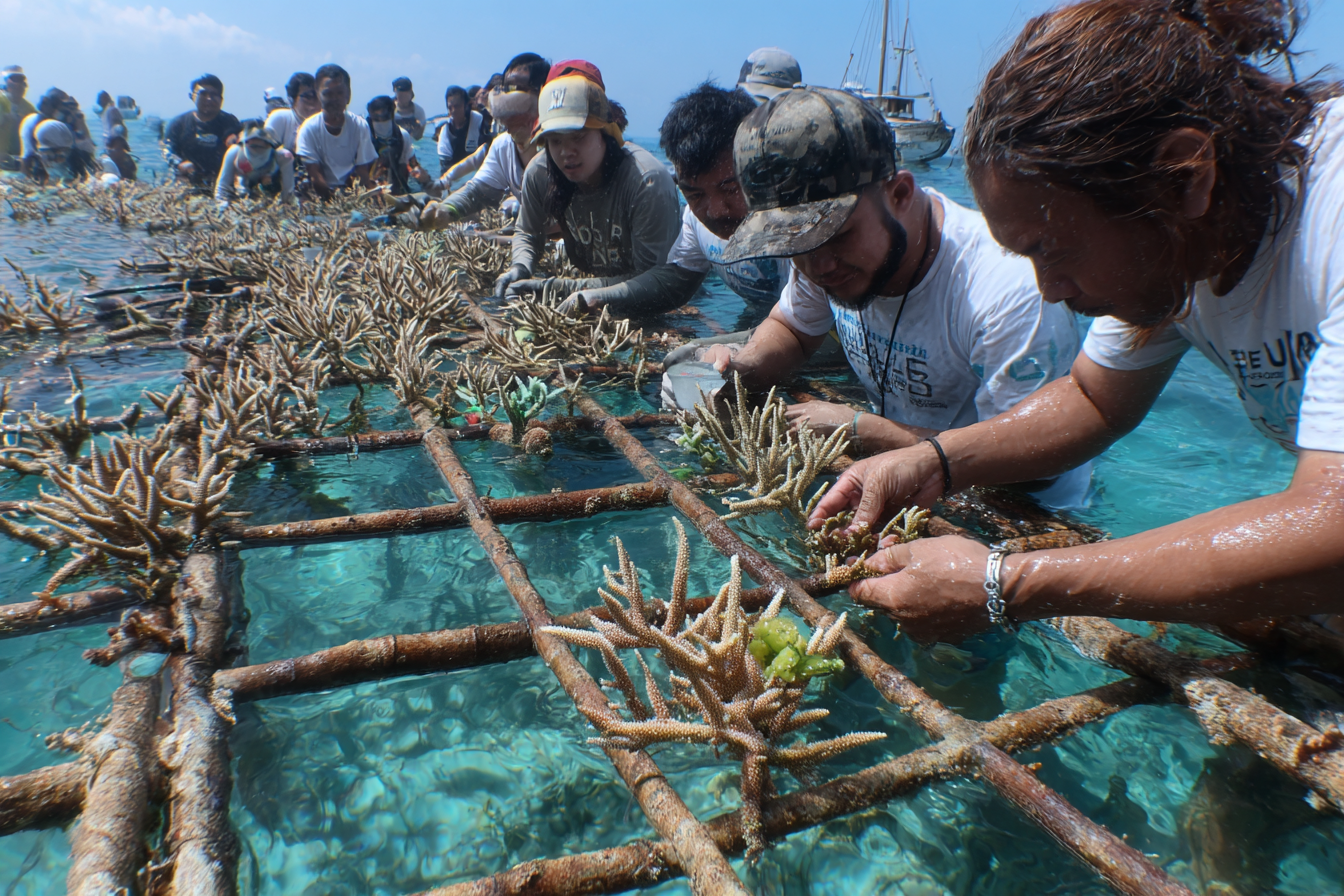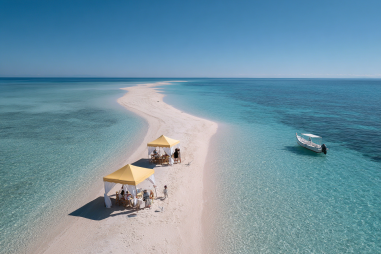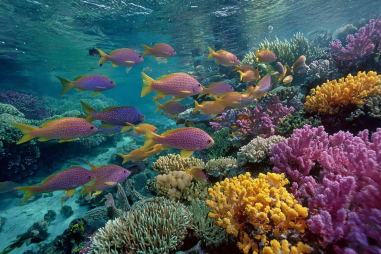Apo Island, a small volcanic island in the Philippines, is renowned for its vibrant coral reefs and rich marine biodiversity. This tiny paradise has become a beacon for sustainable tourism, a practice that ensures visitors can enjoy its natural beauty without compromising the island’s environment or the well-being of its local community. In this article, we will explore how sustainable tourism on Apo Island is actively protecting its delicate ecosystems, supporting the local community, and providing visitors with an authentic and responsible travel experience.
What Does Sustainable Tourism Mean on Apo Island?
Sustainable tourism on Apo Island is about balancing environmental preservation with the socio-economic benefits of tourism. It means attracting visitors in a way that protects the island’s unique marine and terrestrial habitats, supports local livelihoods, and fosters educational opportunities about conservation. Here, sustainable tourism emphasizes minimizing ecological footprints, respecting cultural traditions, and promoting awareness among travelers about the importance of protecting natural resources for future generations.
On Apo Island, this approach translates into careful regulation of visitor numbers, encouraging eco-friendly activities like snorkeling and diving without harming coral reefs, and involving the community in conservation efforts. It’s tourism that doesn’t just take from the environment but gives back to it and the people who live there.
Conservation Programs Supported by Tourism
The revenues generated by sustainable tourism play a crucial role in funding various conservation programs on Apo Island. One of the most well-known initiatives is the marine sanctuary established by the local community with support from conservation groups. This sanctuary protects nearly 450 hectares of coral reefs and serves as a nursery for fish and other marine species, helping to restore biodiversity that was once threatened by overfishing and destructive fishing methods.
Tourism fees and donations contribute funding for reef monitoring, coral restoration projects, and education campaigns. These programs not only benefit the environment but also ensure a healthier and more sustainable fish population, which is vital to the island’s food security and local livelihoods. Moreover, part of the funds aids in maintaining clean beaches, managing waste, and supporting the training of local guides who promote responsible tourism.
Practicing Responsible Visitor Behavior
Visitors to Apo Island can play a direct role in preserving its pristine environment by adopting responsible travel behaviors. Responsible tourism on the island includes:
- Respecting local rules, such as no-touch policies for corals and marine animals to prevent damage.
- Using reef-safe sunscreens to avoid chemical damage to corals.
- Disposing of trash properly and avoiding single-use plastics.
- Supporting local businesses, such as homestays and eateries, instead of large commercial chains.
- Engaging in guided tours to learn about and appreciate the ecosystem rather than disturbing it.
By following these guidelines, tourists help to reduce their environmental impact and contribute positively to the island’s conservation goals.
Community Benefits of Sustainable Tourism
Sustainable tourism on Apo Island brings significant economic and social benefits to the local community. Rather than profits going to external operators, the income stays local, helping fund education, health services, and infrastructure improvements. Employment opportunities increase as local residents work as guides, boat operators, and hospitality staff, fostering a greater sense of ownership and pride in preserving their natural environment.
Additionally, sustainable tourism helps preserve traditional practices and cultural heritage by encouraging visits that respect local customs and involve cultural exchanges. It empowers the community to make decisions about tourism management, ensuring that development aligns with their needs and values rather than being imposed from outside.
How Tourism Impacts the Environment and Possible Solutions
Despite its benefits, tourism can also pose threats to Apo Island’s environment if not carefully managed. High visitor numbers can lead to reef degradation, increased waste, and disturbance to wildlife. Physical damage to corals from careless snorkeling or anchoring can reduce reef resilience, while pollution from boats and garbage can degrade water quality.
To mitigate these impacts, Apo Island has instituted several solutions, including:
- Limiting daily visitor numbers to avoid overcrowding.
- Designating specific snorkeling and diving zones to protect sensitive reef areas.
- Enforcing strict waste management practices tailored to the island’s limited resources.
- Providing environmental education to tourists and locals alike.
- Utilizing renewable energy sources and promoting eco-friendly facilities wherever possible.
These measures help balance tourism with conservation efforts, preserving Apo Island’s delicate ecosystems for the enjoyment of future visitors.
Partnerships Between Locals and Tourists
Apo Island’s success in sustainable tourism stems greatly from the strong partnerships between the local community, government agencies, NGOs, and tourists. The locals take the lead in managing resources and enforcing regulations, promoting a sense of shared responsibility. NGOs often provide training and financial support for conservation programs, while tourists contribute by respecting rules, paying fees that fund preservation, and supporting local enterprises.
This collaborative approach encourages transparency and accountability, fostering trust and continuous improvement. For instance, tourists often participate in community-led eco-tours that not only showcase nature’s wonders but also educate about conservation challenges and achievements. This exchange of knowledge and respect helps build a global community dedicated to protecting Apo Island.
Tips for Travelers to Minimize Their Footprint
Travelers eager to explore Apo Island responsibly can take several practical steps to minimize their ecological footprint, such as:
- Booking tours through certified local operators who prioritize sustainability.
- Carrying reusable water bottles and bags to reduce plastic waste.
- Choosing eco-friendly accommodations or homestays instead of larger resorts.
- Limiting water and electricity consumption to reduce strain on island resources.
- Bringing biodegradable toiletries and using environmentally safe sunscreens.
- Learning about the island’s ecosystem and local culture before visiting.
- Respecting wildlife by maintaining appropriate distances and never feeding animals.
By integrating these habits into their trip planning and activities, visitors not only enjoy a richer experience but actively support the island’s longevity as a natural sanctuary.
Looking Ahead: The Future of Sustainable Tourism on Apo Island
Apo Island stands as a remarkable example of how sustainable tourism can preserve natural beauty and empower local communities. Moving forward, continuous monitoring and adaptive management will be essential to face new challenges such as climate change and evolving tourism trends. Expanding environmental education and increasing community involvement will further strengthen the island’s resilience.
The future holds promise as more travelers seek meaningful, responsible experiences and as locals deepen their commitment to sustainable practices. By protecting Apo Island’s delicate ecosystems through collective effort, we ensure that this paradise remains intact — not just as a destination, but as a legacy for generations to come.







